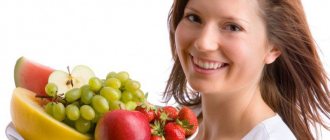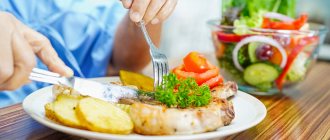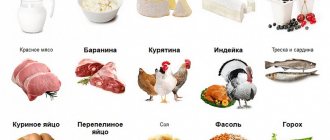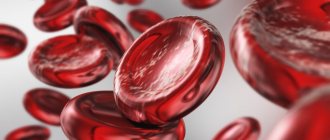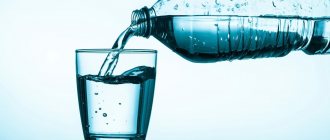Type 2 diabetes mellitus is characterized by insulin resistance, that is, the inability of body tissues and cells to perceive and adequately use insulin. Therapy for the disease consists of taking glucose-lowering medications, following the “Table No. 9” diet and regular physical exercise. Violation of the diabetic diet provokes a hyperglycemic attack (a sharp rise in blood glucose levels).
Patients with the first type of disease can stop the acute condition through an emergency injection of insulin. Non-insulin dependent diabetics do not have this option, so diet is of paramount importance. The daily menu is compiled individually, taking into account the nature of the disease, medications taken and the patient’s age. The diet is based on medical diet No. 9, according to which all products are divided into three categories: permitted, prohibited and limited for consumption.
Vegetables, berries and fruits for type 2 diabetes are grouped according to the value of the glycemic index (GI or GI). If independently compiling a diet causes difficulty, it is advisable to seek help from specialists (nutritionist, diabetologist, endocrinologist).
Glycemic index
When developing a diabetic menu, the main criteria are:
- Energy value of products (daily value ranges from 2200 to 2500 kcal).
- Amount and ratio of nutrients (approximately: carbohydrates - 45%, proteins - 20%, fats - 35%).
- Serving size (no more than 350 grams for the main meal).
- Glycemic index.
For fruit and vegetable products, the last parameter is the most important. GI is a numerical value that determines the rate of breakdown of food entering the body, the release of glucose (mainly from saccharides and amino acids) and its penetration into the blood. The glycemic index is measured on a special scale (from 0 to 100 units). Products that do not contain carbohydrates are indexed with a zero value.
A high GI is considered to be 70 and above, which means that the carbohydrate component predominates in the product, it is quickly processed by the body and absorbed into the blood, causing a rise in sugar levels. Diabetics are not allowed to eat this food. Restricted products have an index ranging from 30 to 70 units. Their quantity and frequency of use must be agreed with the attending physician. In the decompensated stage of diabetes mellitus, most foods from the medium glycemic category become prohibited.
Permitted products are indexed from 0 to 30. This category includes:
- Almost all vegetables and berries.
- Herbs and spices.
- Legumes.
- Protein products.
- Vegetable fats.
- Natural fermented milk products (no additives).
- Some cereals and grain crops.
- Some fruit.
There is no need to calculate GI yourself. Experts took care of this by developing a special table that makes it easy to determine which fruits are suitable for type 2 diabetes, which fruits should be limited in consumption and which should be eliminated from the diet.
Diabetes mellitus has different origins, course of the disease and degrees of insulin dependence. The first degree involves daily insulin injections, the second degree is easier and requires a moderate approach to the formation of a diet and taking medications. For some patients there are strict dietary restrictions, for others, with a mild form of diabetes, most often, you can get by with a moderate diet.
Eating vegetables and fruits is mandatory; they contain fiber, which removes accumulated toxins and reduces weight, as well as vitamins and minerals that accelerate metabolic processes; pectin, which lowers cholesterol and blood sugar levels.
The influence of fruits and vegetables on the course of the disease
To control normal blood sugar levels, the glycemic index is used - an indicator that determines the rate of absorption of carbohydrates. There are three degrees:
- low – up to 30%;
- average level - 30-70%,
- high index - 70-90%
For first-degree diabetes, you must also take into account the daily dose of insulin used. In patients with first-degree diabetes, with a high glycemic level, almost all fruits and vegetables are excluded from food; in second-degree diabetics, they should be consumed with caution. For each patient, it is necessary to select an individual diet, and when selecting vegetables and fruits for diabetes, it is better to first consult with your doctor.
Depending on the percentage of simple carbohydrates, products are divided into the following categories:
- glycemic index is up to 30%. These foods are slow-digesting and safe for diabetics to consume. This group includes whole grain cereals, poultry, and some types of vegetables.
- Index 30-70%. Such products include oatmeal, buckwheat, legumes, some dairy products, and eggs. This type of product should be consumed with caution, especially for those who take insulin daily.
- Index 70-90%. High glycemic index, which means that foods contain a large amount of easily digestible sugars. Diabetics should use products from this group carefully, in consultation with their doctor. Such products include potatoes, rice, semolina, honey, flour, chocolate.
- The index is more than 90%. The so-called “black list” of diabetics - sugar , confectionery and oriental sweets, white bread, corn of different varieties.
The formation of a daily diet must be coordinated with a doctor, because... a number of foods can increase sugar levels and lead to exacerbations or deterioration in the health of a diabetic.
What vegetables are allowed for different types of diabetes?
People with type 2 diabetes can eat different types of vegetables containing fiber every day, with a small percentage of glucose and carbohydrates. What vegetables are allowed to be included in the diet of diabetic patients:
- Cabbage is low in calories and rich in fiber. White cabbage; broccoli containing vitamins A, C, D as well as calcium and iron; Brussels sprouts and cauliflower (fresh or boiled).
- Spinach contains vitamin K and folic acids, which normalize blood pressure .
- Cucumbers (due to their rich content of potassium and vitamin C).
- Bell pepper (reduces sugar and cholesterol, indicated for type 1 and type 2 diabetics).
- Eggplant (helps remove fats and toxins from the body).
- Zucchini (improves metabolic processes and reduces weight), shown in small quantities.
- Pumpkin (despite the high glycemic index, helps reduce glucose levels and speed up the processing of insulin).
- Celery.
- Lentils.
- Onion.
- Lettuce, dill, parsley.
Most green foods have a beneficial effect on lowering blood sugar levels and overall health. “The right” vegetables speed up carbohydrate metabolism, neutralize harmful toxins, and normalize metabolic processes.
What vegetables should you not eat if you have diabetes?
It is necessary to limit vegetables containing starch - potatoes, beans, green peas, corn. The following types of vegetables are contraindicated for diabetes:
- beets (one of the sweetest vegetables);
- carrots (causes surges in sugar and cholesterol levels due to the high percentage of starches);
- potatoes (like carrots, they contain a lot of starch, which increases blood sugar levels);
- tomatoes contain a lot of glucose .
It is necessary to strictly follow the doctor’s recommendations regarding which products can be used to form a daily diet for one or another form of diabetes. If you are overweight , you should not starve yourself while trying to lose weight; it is better to combat this problem with a balanced diet. Also, pay attention to effective methods of treating type II diabetes.
What supplements do doctors recommend?
Doctors recommend taking Ferment S6 with food, which significantly increases the chances of a rapid decrease in blood sugar. A unique herbal preparation is the latest development of Ukrainian scientists. It has a natural composition, does not contain synthetic additives and has no side effects. The drug has been clinically proven to be highly effective for patients with type 2 diabetes.
Ferment S6 has a complex general strengthening effect, restores metabolic processes in the body. Improves the functioning of the endocrine, cardiovascular and digestive systems. You can learn more about this drug and order it anywhere in Ukraine on the official website
What fruits are allowed for diabetics
To control blood sugar, when shaping your diet, you need to take into account the glycemic index of various fruits and vegetables. Failure to follow the diet can lead to an exacerbation of the disease.
Diabetics may be allowed the following fruits and berries :
- green apples (they are rich in two types of fiber);
- cherries (coumarin contained in these berries promotes the resorption of blood clots in blood vessels, which appear mainly in type 2 diabetics);
- raspberries, in small quantities (has a beneficial effect on the heart, strengthens the immune system);
- gooseberries (it contains plant soluble fiber, which removes toxins and waste and normalizes sugar);
- cherries (a berry with a low glycemic index , containing antioxidants that reduce the risk of malignant tumors and cardiovascular diseases);
- strawberries, wild strawberries (the presence of magnesium and vitamin C in the berries helps strengthen the cardiovascular system, but they are not advisable for those who have allergic reactions to these types of products);
- rosehip (use prepared decoction or infusion);
- blueberries (has a preventive and therapeutic effect on vision and inhibits eye diseases that develop due to diabetes, normalizes blood sugar);
- viburnum (a very useful berry for diabetic patients with varying degrees of the disease, contains many amino acids, vitamins and microelements, has a beneficial effect on the eyes, blood vessels, and internal organs);
- sea buckthorn, sea buckthorn oils (doctors recommend that many diabetics use sea buckthorn oil to eliminate problems with the skin and hair);
- pears (tasty and healthy fruit for type 2 diabetes);
- pomegranate (optimizes blood pressure, improves metabolism, lowers cholesterol , reduces thirst);
- chokeberry (has antimicrobial and anti-inflammatory effects, normalizes blood pressure, but it is better to consult a doctor before use);
- kiwi (an excellent fruit for weight loss for diabetics - includes folic acid, enzymes and polyphenols, which effectively regenerate body tissues and promote the breakdown of fats);
- peaches, apricots, plums;
- blueberries (very rich in vitamins and antioxidants - such berries are very useful for patients with type 2 diabetes);
- cranberries, lingonberries;
- currants;
- oranges (allowed for diabetes, give a daily dose of vitamin C);
- grapefruit (can be daily).
Type 2 diabetics should preferably consume fruits and berries fresh or frozen, not boiled in syrups; dried fruits are prohibited.
Which fruits are not recommended for diabetics?
The consumption of bananas, melons, sweet cherries, tangerines, pineapples, persimmons is not recommended, and juices from these fruits are also undesirable. People with type 2 diabetes should not eat grapes. Forbidden fruits for such diagnoses are dates and figs. Dried fruits and compotes made from them should not be consumed. If you really want, you can prepare uzvar from dried fruits by first soaking the dry berries for five to six hours in water, changing the water twice when boiling and cooking until tender. You can add a little cinnamon and sweetener to the resulting compote.
Why some fruits are dangerous for those with high sugar levels:
- Pineapple can cause spikes in blood sugar levels. For all its usefulness - low calorie content, the presence of vitamin C, strengthening the immune system - this fruit is contraindicated for patients with diabetes of various types.
- Bananas are high in starch, which has an adverse effect on blood sugar .
- Grapes of any variety are contraindicated for diabetics due to their high glucose content, which increases normal sugar levels.
Recommended juices for diabetics
Diabetics of different types can drink the following types of juices:
- lemon (cleanses the walls of blood vessels, helps improve metabolic processes and cleanse from waste and toxins, it should be drunk in small sips without water or sugar);
- pomegranate juice (recommended to drink with honey);
- bilberry;
- birch;
- cranberry;
- cabbage;
- cucumber;
How to determine the optimal amount of fruits or vegetables to eat
Even eating vegetables or fruits with a low glycemic index can cause the body to exceed the permissible level of sugar. Therefore, when choosing a daily nutrition menu, you need to pay attention to the indicators of a particular product and calculate the optimal amount of its consumption. A serving of fruit should not exceed 300 grams for sour varieties (apples, pomegranates, oranges, kiwi) and 200 grams for sweet and sour varieties (pears, peaches, plums).
If after reading this article you still have questions about nutrition for diabetes, write in the comments at the bottom of this article, I will be happy to advise you.
Join our diabetic community on Viber! Click here and connect (completely free)
The importance of fruits in a diabetic diet
According to doctors, fruits should be present in the diet of patients with type 2 diabetes every day. The norm is 0.2 kg/day of any fruits approved by a diabetologist. The need for fruit food is dictated by the following reasons. Fruits and berries are a natural source of vitamins, micro- and macroelements. One of the signs of diabetes is decreased immunity. This is due to the close correlation between the body’s endocrine and immune systems.
Some immune cells are endowed with hormonal properties, and some endocrine glands produce specific hormones that regulate immune functions. Hormonal imbalance automatically leads to immune disruptions (and vice versa). A weakened immune system is unable to resist bacteria and viruses, as a result of which the defenseless body is exposed to constant colds, acute respiratory viral infections, and infectious diseases of the skin and mucous membranes. The fruit component of the menu increases the immune status of a diabetic.
Products in this category contain antioxidants (mainly vitamins A, C, E). The substances are inhibitors of free radicals that are formed during metabolism. In a healthy body, the action and quantity of free radicals is controlled by the immune system. In patients with diabetes and other chronic diseases, the number of free radicals is abnormally increased, which contributes to accelerated aging of the body and provokes cancer.
Berries, vegetables and fruits contain a sufficient amount of fiber. Dietary fiber from the group of polysaccharides is considered one of the basic components of a diabetic diet. Fiber is found only in products of plant origin. It is not processed during the fermentation process. Acting as a natural sorbent, dietary fiber removes toxic, cholesterol and waste deposits from the body and promotes weight loss.
Data on fiber quality are especially relevant for type 2 diabetics suffering from obesity and atherosclerosis. Most plant fruits do not have high energy value and do not contain fat. Therefore, they are not sources of gaining extra pounds. The composition of the fruit is dominated by fructose (fruit sugar). This monosaccharide is absorbed more slowly than glucose, which prevents sudden “jumps” in blood sugar. In addition, the process of breaking down fructose in the liver into its components (fats and glucose) occurs without the assistance of insulin, only under the influence of enzymes.
Important! Despite the importance of fruits, only that part of the fruits that meets the requirements of diabetic nutrition is allowed for consumption.
More information about dairy products
Dairy and fermented milk products for diabetes should be chosen based on their fat content, calorie content and amount of carbohydrates. Kefir or fruit-filled yoghurt tend to contain too much sugar and should be avoided. The optimal dairy menu is:
| Name | Squirrels | Fats | Carbohydrates | Calorie content |
| Milk | 3,2 | 3,2 | 4,8 | 64 |
| Kefir | 3,4 | 2,5 | 4,7 | 50 |
| Low-fat sour cream | from 2.0 to 2.6 | 10–15 | About 3 | 147–158 |
| Acidophilus | 2,7 | 3,2 | 3,8 | 56 |
| Natural yogurt | up to 4.5 | 2,5 | from 6 to 9 | from 60 to 70 |
| Curdled milk | 3,0 | 2,5 | 4,2 | 53 |
| Low-fat cottage cheese | 18 | 1,8 | 3,3 | 101 |
| Low-fat cottage cheese | 17 | 0 | 1,6 | 82 |
| Light cheese | 28 | 15 | 0 | 250 |
| Adyghe cheese | 16 | 18 | 0 | 283 |
Ryazhenka (2.5% fat content), whey, and low-fat curd cheese are allowed in the menu.
Comparison of fructose and sucrose
You should not think that fructose can be consumed without restrictions. Regarding diabetes, the product has both advantages and disadvantages. Comparative assessment of fruit sugar in relation to sucrose:
| Advantages | Flaws |
| 2 times sweeter, therefore, you need half as much of it | It is not restored (unlike sucrose) when there is a lack of carbohydrate reserves |
| Slowly absorbed by the body | Does not affect brain activity (sucrose stimulates brain activity) |
| Breaks down during fermentation (without insulin) | |
| Does not affect the production and quantity of hormones | |
| Has low energy value |
Fructose does not require insulin during its processing and affects glycemic levels to a lesser extent than sucrose. However, glucose isolated from fruit sugar cannot reach the cells and tissues of the body without insulin and accumulates in the blood. In order not to provoke an increase in glycemia, you should not consume fructose uncontrollably.
Dietetics against diabetes
According to the classification of therapeutic nutrition according to M. Pevzner, patients with diabetes are prescribed the “Table No. 9” diet. It is based on the principle of measuring the nutritional qualities of a product in bread units (XE = 12 g of carbohydrates) per 100 grams. The daily diet of a diabetic must be kept within the framework of 12 to 24 units. Initially, a diet with a minimum dose of XE is recommended. Subsequently, it is possible to increase by one unit per week, provided the body reacts adequately and there is no increase in sugar levels.
Varieties of diet (9-A and 9-B) are prescribed depending on the type of disease. For non-insulin-dependent diabetes type 2, “Table 9-A” is used. The diet is aimed at reducing body weight, since this factor is fundamental in the occurrence of the disease. In insulin-dependent type 1 diabetes, the body stops producing the hormone insulin, which is responsible for transporting glucose into tissues and cells.
To maintain the patient's vitality, insulin is injected. Therefore, “Table No. 9-B” is recommended, with an increased carbohydrate load. Therapeutic nutrition is prescribed by an endocrinologist. The doctor will determine the necessary type of diet depending on the individual course of the disease. Eating behavior and doses of administered insulin are closely interrelated. A self-composed diet requires the approval of the attending physician.
Calculating XE allowed nutritionists to formulate the correct menu that inhibits the development of hyperglycemia
Safe fruits
Considering the benefits of fruits for the body, a slight excess of GI is allowed (from 1 to 10 units). The following types of fruits (indicating the glycemic index) bring the minimum danger from consumption and maximum benefit for diabetes.
| Rosaceae | |||
| apples (30) | pears (34) | quince (35) | |
| contain fiber, pectin, copper, manganese, iron, potassium, antioxidants. Helps eliminate digestive problems. | in addition to the vitamin effect on the body, they have the ability to eliminate pathogenic microorganisms | has anti-inflammatory, antibacterial, hemostatic, diuretic effects | |
| Stone fruits | |||
| apricots (20) | nectarines (30) and peaches (35) | plums (22) | |
| accelerate metabolism, improve digestion, quench thirst, regulate the choleretic process and the functions of the hepatobiliary system, help the heart function | maintain stable functionality of blood vessels and heart, improve hematopoiesis, stimulate metabolic processes and peristalsis, have a choleretic effect, stabilize the psycho-emotional state, increase bone strength | increase hemoglobin levels, strengthen the nervous system, improve the functioning of the digestive system, and prevent constipation | |
| Citrus | |||
| lemons (20) | grapefruits (22) | pomelo (30) | |
| help reduce blood sugar levels, stabilize the functioning of the renal apparatus and organs of the hepatobiliary system, and prevent atherosclerosis and thrombosis | tone, strengthen the walls of blood vessels, stabilize the functioning of the central nervous system (central nervous system), have antimicrobial and antifungal effects | helps to lose excess weight, eliminate dysania (sleep disorder) and stabilize blood pressure, has a beneficial effect on cardiac activity | |
You should pay attention to two more representatives of the fruit community:
- Pomegranate. GI=35. Improves hematopoietic processes, treats anemia. Has anti-inflammatory and antibacterial properties. The content of enzymes in the grains stabilizes the functioning of the pancreas, intestines and stomach. Tanning agents in the fruit stimulate skin regeneration.
- Avocado. GI=10. Normalizes cardiac activity and supports healthy thyroid function. Favors hematopoiesis, reduces cholesterol and blood sugar. Prevents constipation, atherosclerosis, vitamin deficiency. Stabilizes blood pressure.
Important! Grapes are an exception to the rule. Despite the GI value of 45 units, it is contraindicated in diabetes, since the composition is dominated by glucose rather than fructose and there is not enough fiber. Grapes cause an immediate increase in glycemic levels.
Regulatory boundaries
A one-time increase in digital glucose values associated with incorrect consumption of sweet foods on the eve of the test is not yet an indicator of diabetes. Objective data can be obtained by comparing the results of several tests taken on an empty stomach. Regulatory boundaries vary depending on the patient's condition and age. In the presence of infectious diseases or pregnancy, indicators may increase slightly.
When assessing blood sugar levels, the patient's age category should be taken into account
In addition to plasma glucose levels, diabetes mellitus is differentiated by the type of disease:
- Insulin dependent or type 1. It is characterized by a malfunction of the pancreas in the production of the hormone insulin, which is responsible for delivering sugar to tissues and providing them with energy.
- Insulin-independent or type 2. It occurs due to the inability of body cells to use a hormone (insulin), which causes excess glucose to accumulate in the blood.
To diagnose a specific type of disease, not only an analysis for the amount of mmol/l glucose is performed, but also a test for the determination of antibodies to glutamate decarboxylase (GAD antibodies). Only an endocrinologist can diagnose diabetes and determine treatment tactics. To avoid complications, self-diagnosis and self-medication are prohibited.
About berries
Most garden and wild berries have a low glycemic index. The berry list is headed by viburnum with GI = 10 units. For diabetes, the following healing properties of the berry are especially valuable:
- Hypotonic.
- Vascular cleansing.
- Anti-inflammatory.
- Wound healing.
- Immunostimulating.
- Calming of the central nervous system.
Endocrinologists recommend blueberries for daily consumption. Although blueberries have a GI of 43 and fall into the average category, they are one of the healthiest plant foods for diabetes. The main healing quality of blueberries for diabetics is the prevention of retinopathy - damage to the vascular system of the organs of vision. In addition, regular consumption of the fruits of the blueberry bush can improve memory and brain function, restore damaged skin, and normalize digestion and liver function.
Blueberry berries and leaves are used in traditional medicine recipes
Other berries and their beneficial properties for diabetics:
Can you eat watermelon if you have diabetes?
- Black currant. (GI=15). Strengthens the cardiovascular system, prevents the development of atherosclerosis, kidney disease and urinary system. Restores skin elasticity. It prevents cancer and viral infections.
- Lingonberry (25). It is a natural means of preventing nephropathy, a severe complication of diabetes mellitus on the vessels of the renal apparatus. It has antisclerotic, antibacterial and antiseptic effects.
- Strawberries (25). Improves eye health, strengthens the immune system, supports the functional abilities of joints, stimulates brain activity, and prevents the development of cancer.
- Hawthorn. First of all, this is the prevention and treatment of cardiovascular complications of diabetes. And also reducing anxiety and irritability, normalizing night sleep, stabilizing metabolic and digestive processes, improving the functioning of the liver, kidneys and thyroid gland.
Diabetics will benefit from: strawberries, red currants, blackberries, cherries, cherries. A clear contraindication to eating berries and fruits is an individual allergy to these products.
Sweeteners
There is an opinion that artificial sweeteners are absolutely harmless and are a substitute for traditional sugar. However, it is not. According to nutritionists, only natural products can be used as sweeteners and only in strictly limited quantities. Natural sugar substitutes include honey, fructose and stevia.
Honey
Natural honey is rich in fructose, glucose and sucrose. Moreover, it does not matter what type of honey a person suffering from diabetes plans to consume. The sucrose content in this product is so insignificant (no more than 5%) that its presence in the body does not in any way affect the production of insulin. However, those who decide to include honey in their diet should know that the daily intake should not exceed 2 teaspoons.
Fructose
Insulin is not involved in the metabolism of fructose, which is why its consumption is absolutely safe for people with type 2 diabetes. Fructose has a low glycemic index, several times less calories than regular sugar and at the same time 1.5 times sweeter than sugar. No more than 40 g of fructose per day is allowed; if this rule is neglected, the liver’s sensitivity to insulin production may decrease, which can lead to negative consequences. Fructose is presented in the retail chain in the form of tablets and powder.
Stevia
WHO experts approved this perennial plant as a sugar substitute in 2004, and since then, people with type 2 diabetes have been adding stevia when cooking or in ready-made dishes. Stevia synthesizes stevioside (sweet glycoside), making its taste almost 20 times sweeter than regular sugar. According to nutritionists, stevia promotes the production of your own insulin and restores the functioning of the pancreas.
For diabetes, the daily intake of stevia is limited to 1 tablespoon per day, since its abuse can develop a toxic effect, which will lead to an increase in glucose levels. Stevia is produced in the form of syrups, powder, and liquid extracts.
Fruit drinks
It is not recommended to consume freshly squeezed juices for diabetes mellitus due to the high concentration of fructose in them. The drink you prepare yourself should be diluted with water in a 1:1 ratio. The main danger of juices is the lack of fiber in them. Fruit sugar does not linger in the digestive system, but is instantly absorbed into the blood.
It is prohibited to drink ready-made packaged juices. They contain a huge amount of sugar, which is used as a preservative for long-term storage of the drink. The most beneficial for a diabetic patient are homemade compotes of berries and fruits, prepared without adding sweeteners.
Boiled fruits can be added to cottage cheese, yogurt or eaten as a separate dessert.
Prohibited and restricted fruits for diabetes
Fruits with high glycemic index values should be completely eliminated from the menu of diabetics: dates (more than 100), pineapple (66). Limited fruits have an average GI. They are allowed for use in type 2 diabetes mellitus with the permission of the doctor, taking into account the stage and nature of the disease, the presence of complications, and BMI (body mass index).
The following are subject to strict restrictions:
- Melons: melons (GI=65) and watermelons (72).
- Fruits: banana (60), persimmon and mango (55), kiwi (45).
The introduction of conditionally permitted foods into the diet requires constant glycemic control. If after eating them, your blood sugar rises by 3 mmol/l or more, you should avoid this fruit. Consumption of fruits with an average glycemic index is allowed only in a state of stable diabetes compensation.
What to exclude
Sweet and juicy fruits may have a richer taste, but these fruits are not suitable for diabetics. Moreover, their use can provoke a sharp increase in plasma glucose levels. Prohibited fruits with a high index: melon and banana (60), pineapple and raisins (66 and 65, respectively), dates (from 110), watermelon (72), cherry (70). Despite the average value of 45 units, grapes are contraindicated. In its total carbohydrate composition, the largest percentage belongs to pure glucose.
Violation of the dietary intake is the main reason for the transition of diabetes to the decompensation stage, when it is impossible to regulate sugar levels even with the help of medications. In this condition, the development of complications is inevitable. Diabetes mellitus is an incurable disease, but with proper eating behavior, the disease can be controlled. This will protect you from serious consequences.
About dried fruits
Permission to consume dried fruits is also determined by the glycemic index value. The most common dried fruits are safe for diabetics: apples and dried apricots (GI=30), prunes (GI=40). Raisins are allowed in limited quantities, as their glycemic index is 65 units. It should be borne in mind that the same fruit, when dried, can change its GI towards an increase. For example, the GI of fresh melon is 60; when the product is dried, the index increases tenfold.
List of prohibited dried fruits:
- Exotic fruits: papaya, guava, carom.
- Figs and dates.
- Bananas, melons, pineapples.
Regular consumption of dried fruits reduces the risk of heart disease
In addition to dried fruits, diabetologists advise paying attention to dried blueberries, viburnum, lingonberries, and currants. They can be added to compotes, tea and desserts prepared according to diabetic recipes.
Some useful tips
When introducing berries and fruits into your diet on a regular basis, you should follow the following recommendations:
- Eat foods fresh, as the glycemic index increases when cooked.
- Do not peel (unnecessarily), because the peel of the fruit is digested more slowly than the pulp, which reduces the rate of resorption.
- If possible, use together with nuts, this will slow down the process of breakdown and absorption of glucose.
The daily portion should not exceed 200 grams.
Results
Fruits and berries are natural sources of vitamins, minerals, antioxidants, fiber and fructose. Their consumption helps strengthen the body's immune system and delay the development of diabetic complications. The choice of products depends on the glycemic index value. Low GI fruits can be consumed without restrictions. Indexed from 40 units to 70 - require strict control of blood sugar levels. A high food index means an absolute ban for diabetics.
White list
Grapes for pancreatitis
Endocrinologists include the most useful fruits for diabetes:
- Pomegranate. Normalizes fat metabolism, increases total hemoglobin, has a beneficial effect on the pancreas and digestive processes, because they contain enzyme substances. Fiber and tannins in the fruit seeds stimulate intestinal function.
- Apples. They are a must-have product on the menu for diabetics. Rich in pectin and fiber, which help remove toxins from the body and stabilize digestion. Contains vitamins A, C, E, copper, potassium, iron, manganese.
- Pears. They have a bactericidal effect, which helps in the healing of abrasions and wounds, as well as a diuretic effect. For type 2 diabetes, they are allowed without restrictions. It is not recommended to eat on an empty stomach, as this can lead to increased gas formation.
- Pomelo. Contains a large amount of potassium. This has a positive effect on the functioning of the heart and blood vessels.
Important! If there is an individual allergic reaction to a particular product from the white list, it is eliminated regardless of the GI value.
Low glycemic index berries and fruits allowed for diabetics
According to the glycemic index value, these fruits can be eaten if you have diabetes.
